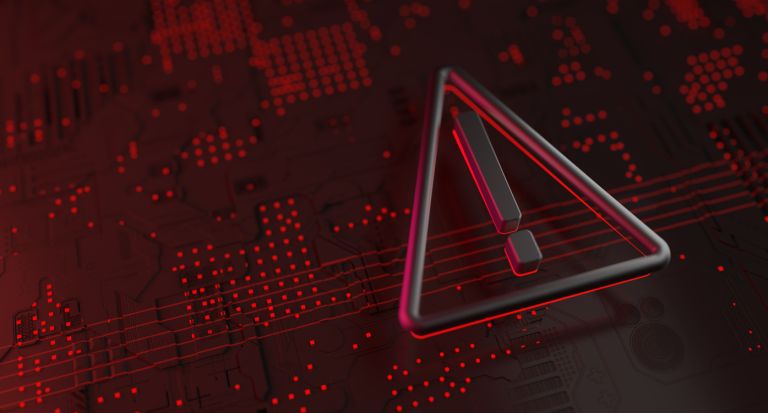
- Home
- Risks management
- Ransomware-as-a-Service makes cyberattacks more dangerous
Ransomware-as-a-Service makes cyberattacks more dangerous


According to a research paper published by the Cyber Rescue Alliance in 2022 nearly every company in the world has been targeted by phishing attacks. In 12% of successful attacks, attackers had full access to the company’s data for more than a year before ransomware encrypted the data.
According to security researchers at Check Point Research (CPR), cyberattacks increased 27% in 2022 compared to 2021, and the number is expected to explode in 2023. AI technologies are driving increasingly sophisticated and effective attacks in this environment. In this context, the seriousness of the situation quickly becomes clear. In the past, attacks were mainly carried out by professional hackers or cybercriminals with the necessary expertise.
However, attacks by cybercriminals without extensive IT knowledge are becoming more common. This is mainly due to the increasing use of AI technologies to help inexperienced hackers carry out professional attacks that can also affect experienced users or IT professionals.
Ransomware-as-a-Service (RaaS) goes even further. It is an evolution in cybercrime that significantly lowers the barrier to entry into the world of cyber extortion. Like Software-as-a-Service (SaaS) models, RaaS enables less technically savvy actors to access sophisticated ransomware tools and infrastructure.
Customers of this « service » can initiate ransomware attacks without having to be experts at creating malware or bypassing security systems themselves. Typically, the spoils are shared between the RaaS provider and the actor who launched the attack. This democratization of cybercrime not only significantly increases the number of potential attackers, but also presents a constant challenge to cybersecurity professionals who must now defend against an ever-growing tide of attacks.
Cybercriminals themselves can access the services of professional hackers and « buy » Ransomware-as-a-Service. Many hackers today do not necessarily have extensive IT skills, but they do have a lot of criminal energy. Hacking skills can be acquired by attackers on the darknet. It is no longer necessary to develop ransomware to carry out well-designed and highly professional ransomware attacks. For these reasons, the number of attacks continues to increase, and the quality of the attacks continues to improve.
Top Ransomware-as-a-Service threats to Enterprises, government agencies, and organizations
The proliferation of ransomware-as-a-service (RaaS) has permanently changed the cybercrime landscape and poses several significant threats to businesses, government agencies, and other organizations. One of the most concerning aspects is the increase in the number of attacks. The low barrier to entry offered by RaaS means that cybercriminals without deep technical knowledge can launch successful ransomware attacks. This exponentially increases the volume and variety of attacks. Second, the professionalization of attacks is a growing challenge. As RaaS providers constantly update their tools to stay ahead of the latest security measures, defending against these attacks becomes increasingly complex. This also means that even highly secure organizations are at constant risk of being compromised.
Another serious risk is financial. Ransomware is on the rise, and many organizations are forced to pay to recover their data or prevent further attacks. Not only does this exacerbate the financial risk for affected organizations, but it also continues to fund criminal activity. In addition to the financial aspect, there are also significant reputational risks. A successful ransomware attack can severely shake the confidence of customers, stakeholders, and the public. In some cases, legal penalties and sanctions are possible if sensitive data is compromised.
Finally, the threat to critical infrastructure should not be underestimated. Government agencies and organizations responsible for public services such as water, electricity and healthcare could be crippled by RaaS attacks, with potentially catastrophic consequences for the public. Overall, the RaaS problem significantly exacerbates existing cybersecurity challenges and requires a proactive and comprehensive approach by all affected organizations.
Protect against Ransomware-as-a-Service.
In addition to general ransomware defenses, organizations can implement additional strategies to specifically protect against the risks posed by ransomware-as-a-service. One promising approach is to increase monitoring of network behavior and anomalies. As RaaS models are constantly updated to evade the latest security measures, identifying unusual activity on the network is a critical factor in detecting and stopping attacks early. Specialized AI-based security solutions can be particularly effective here.
Another approach is to provide targeted training to employees to detect social engineering tactics, which are often used in advance of a ransomware attack. By regularly updating threat intelligence in real time, possibly through participation in specialized cybersecurity information-sharing networks, organizations can continually adapt their defenses to the latest RaaS tactics. In addition, a « honeypot » system could be established, a deliberately vulnerable network segment that attracts attackers, distracting them from the real targets while providing valuable information about their methods.
Recommended actions to prepare for Ransomware-as-a-Service.
With the growing threat of ransomware-as-a-service (RaaS), it is imperative that organizations implement both preventative and reactive strategies. An important first step is to conduct a thorough risk assessment to determine which areas of the business are most at risk and how existing security systems can be improved. These findings should then be used to develop a comprehensive contingency plan that includes both technical and organizational measures to defend against and recover from ransomware attacks.
In addition to standardizing security protocols, organizations should also consider investing in specialized AI-powered monitoring systems. These systems can detect unusual activity on the network and provide early warnings before an attack even occurs. Additionally, employee training should be a high priority, especially when it comes to detecting social engineering techniques that are often used prior to ransomware attacks.
the newsletter
the newsletter



